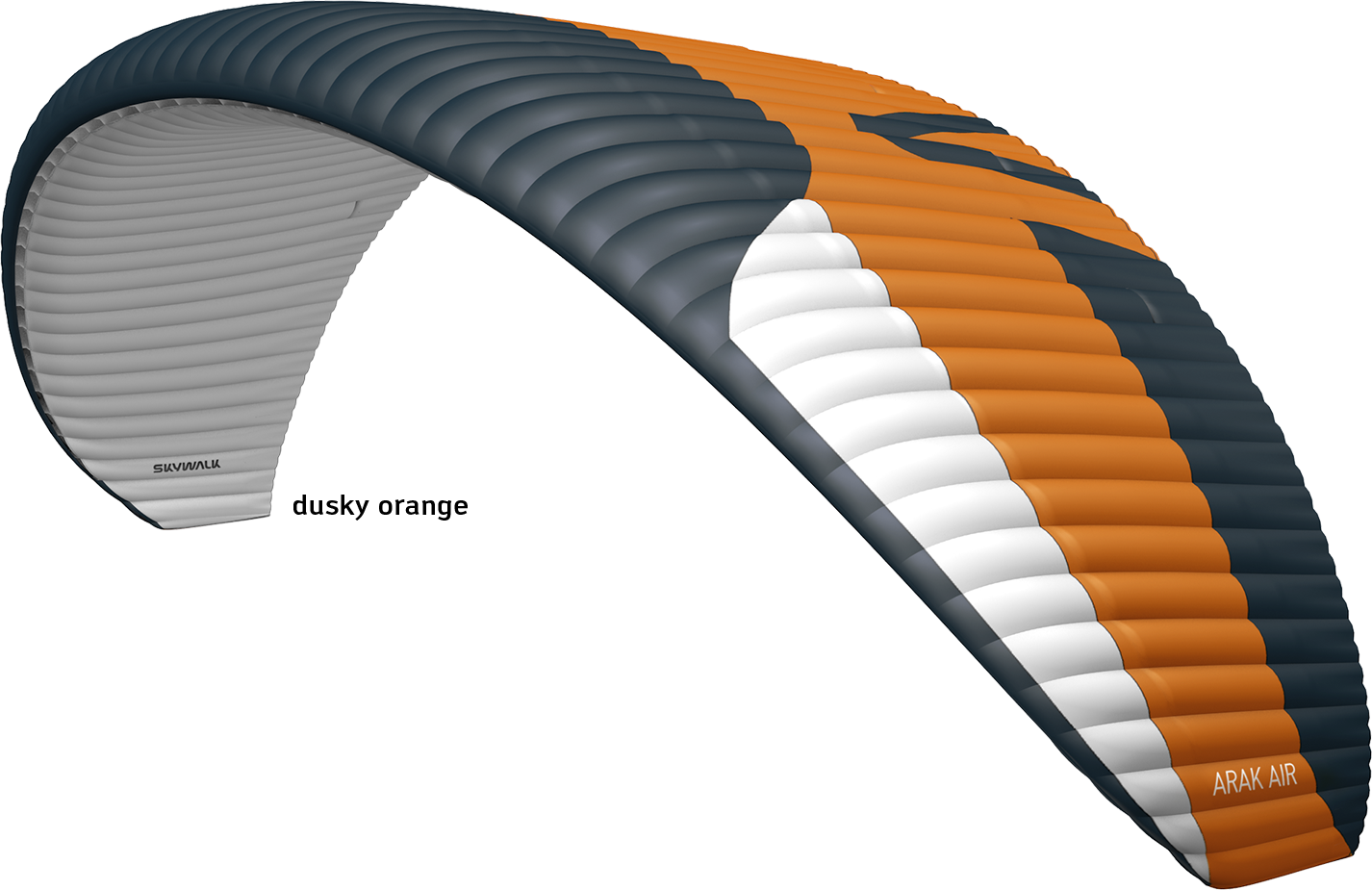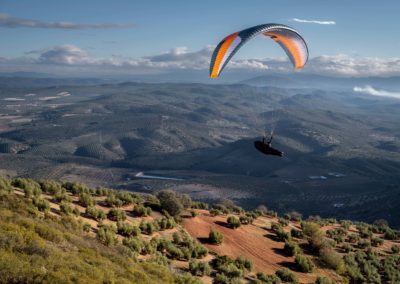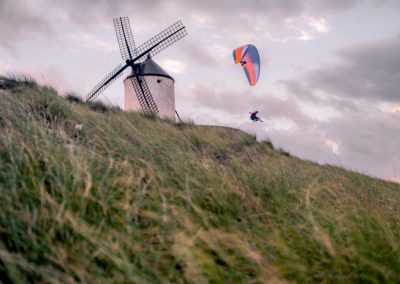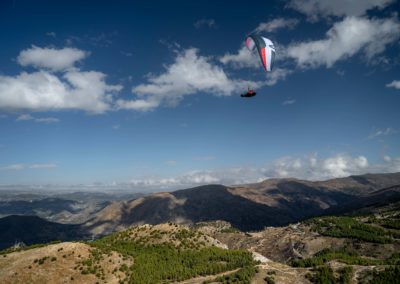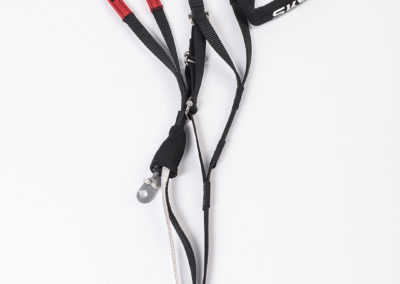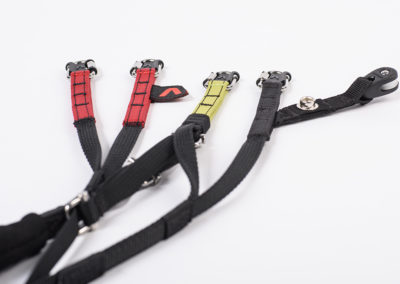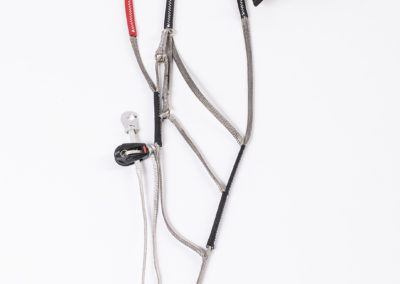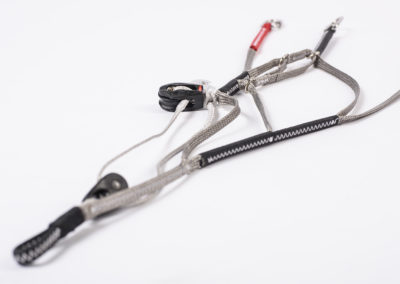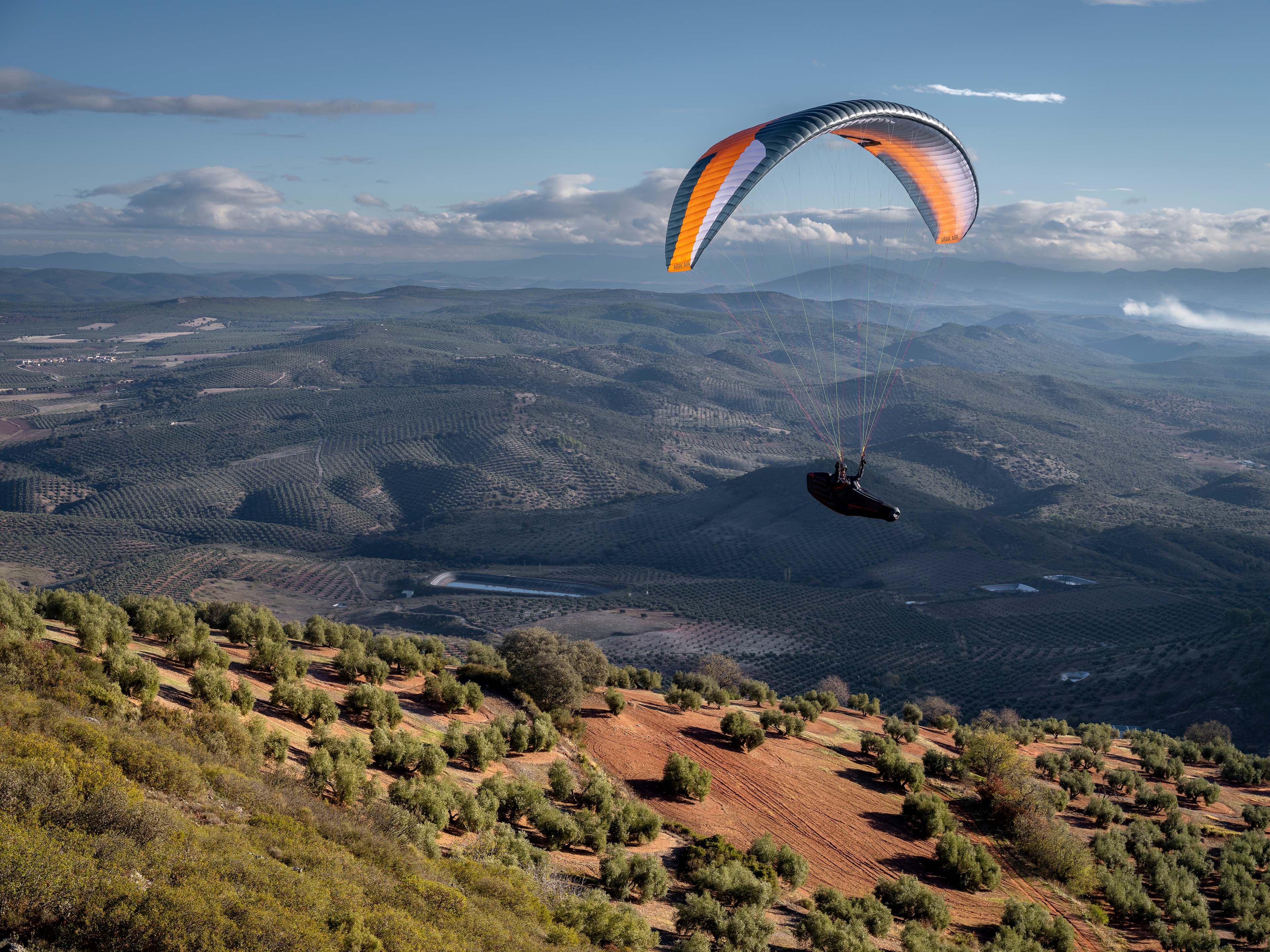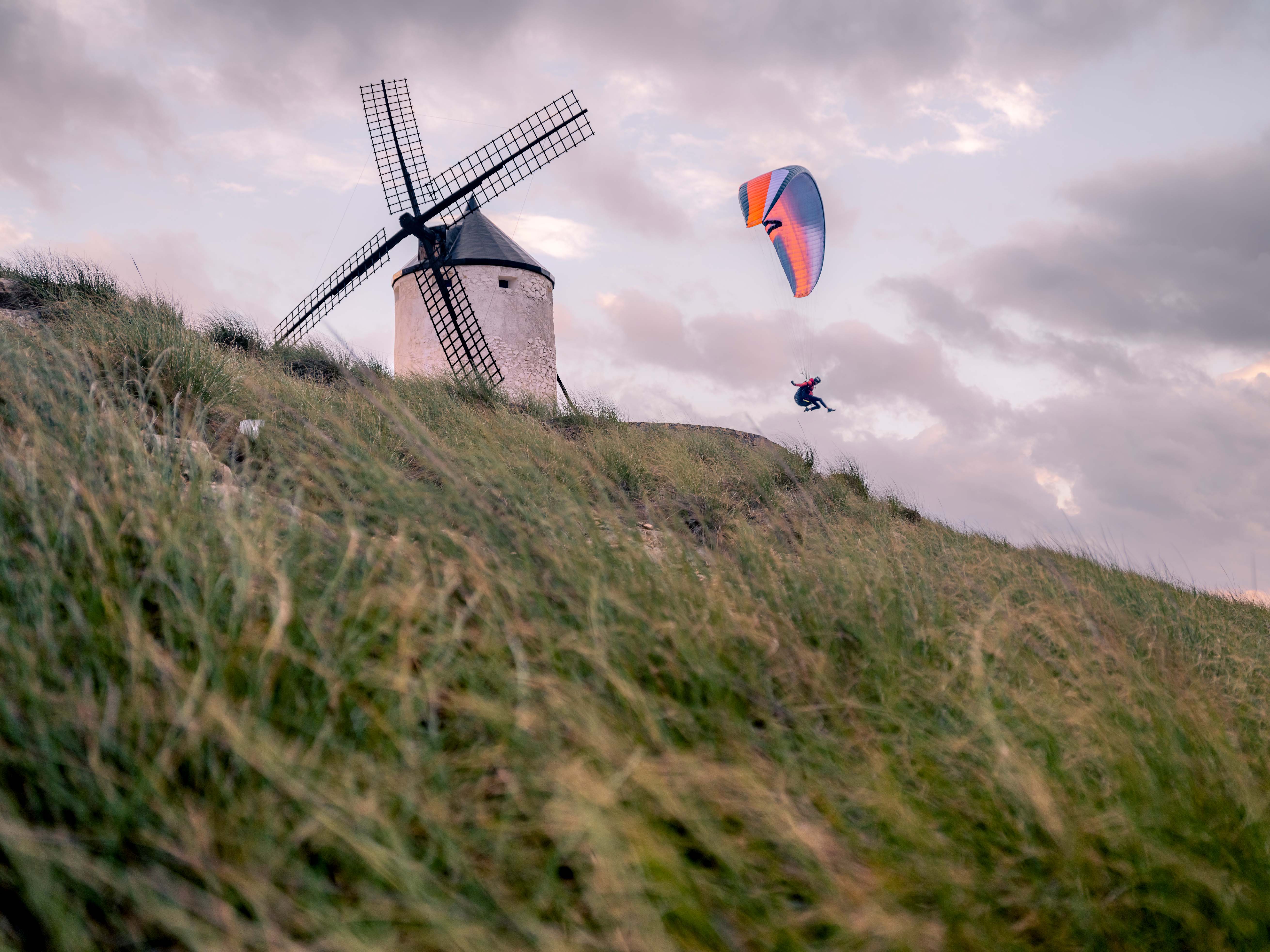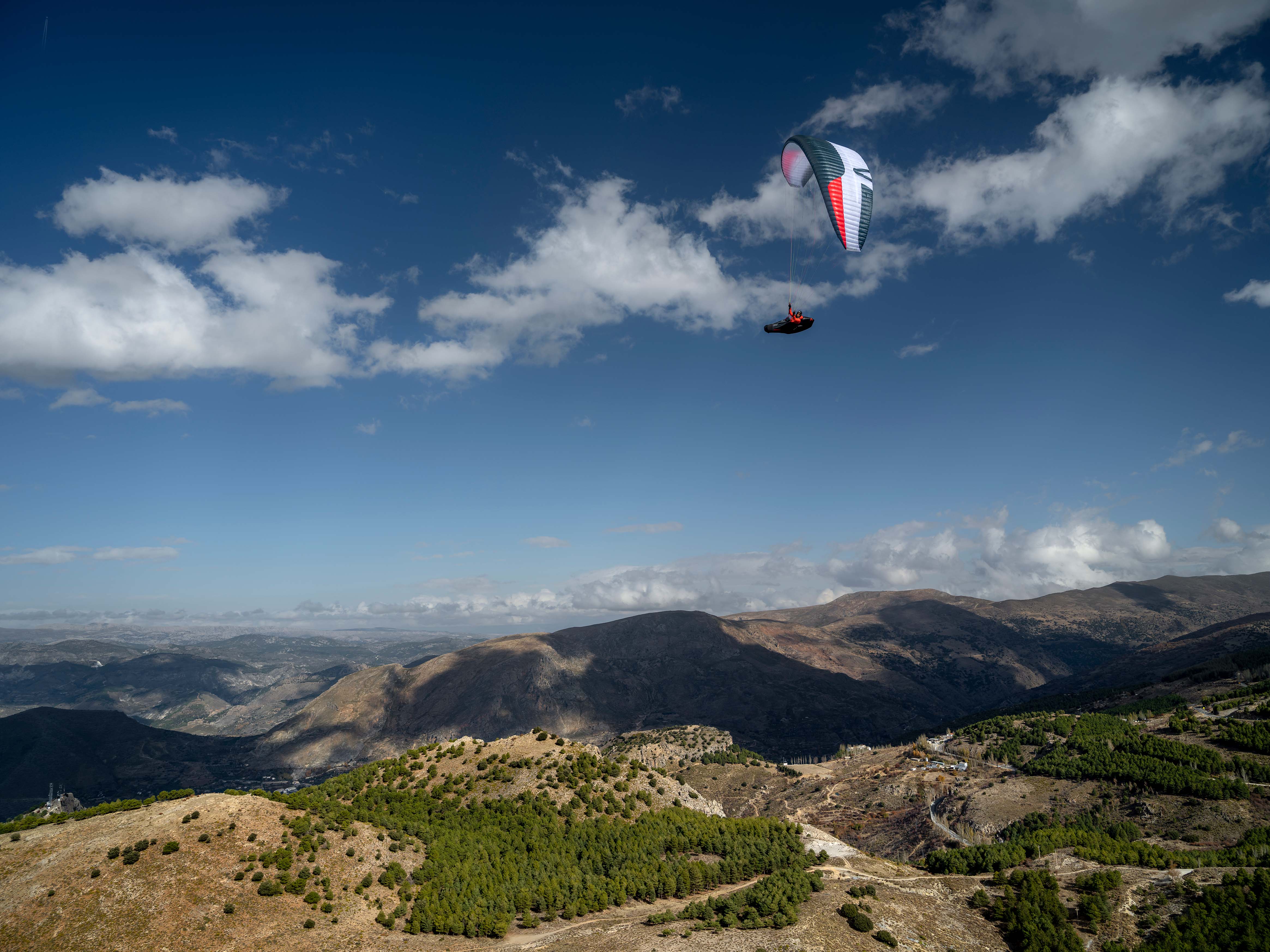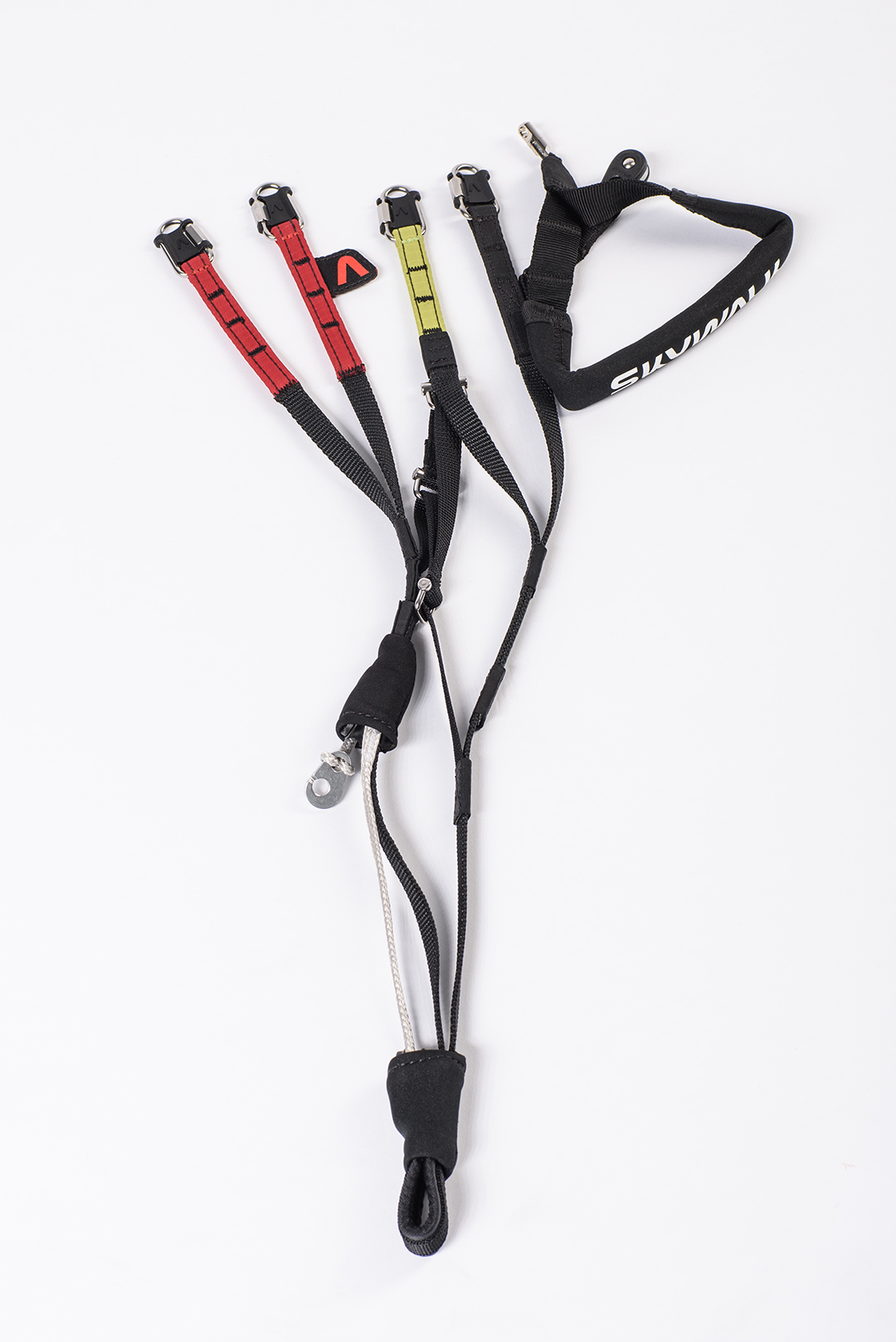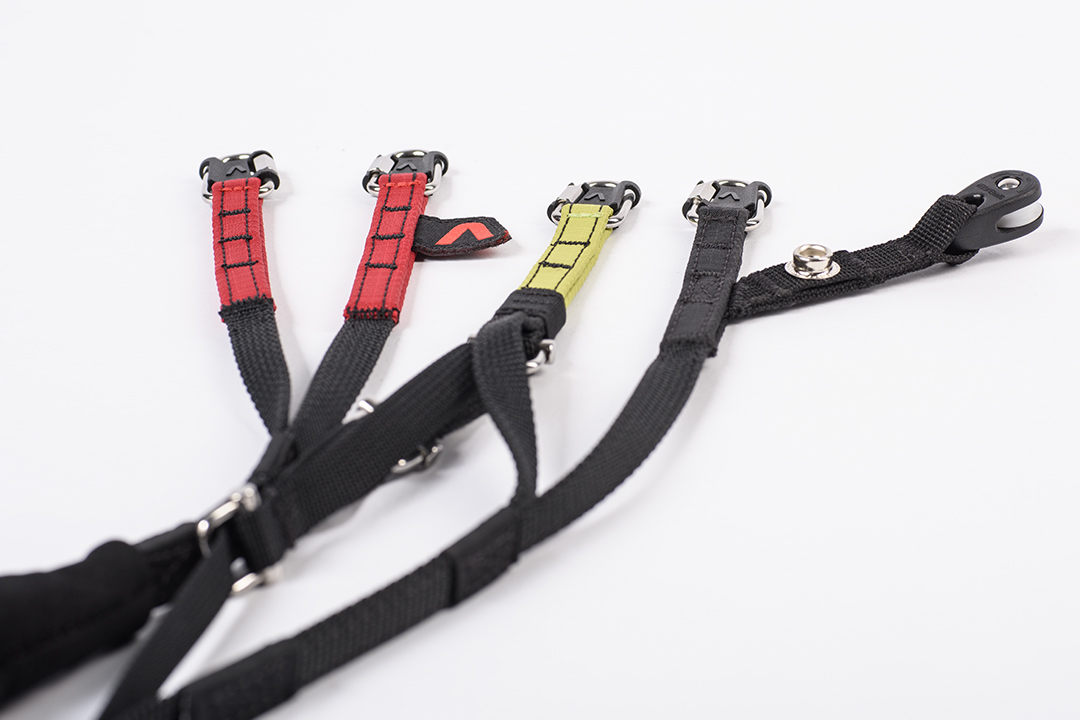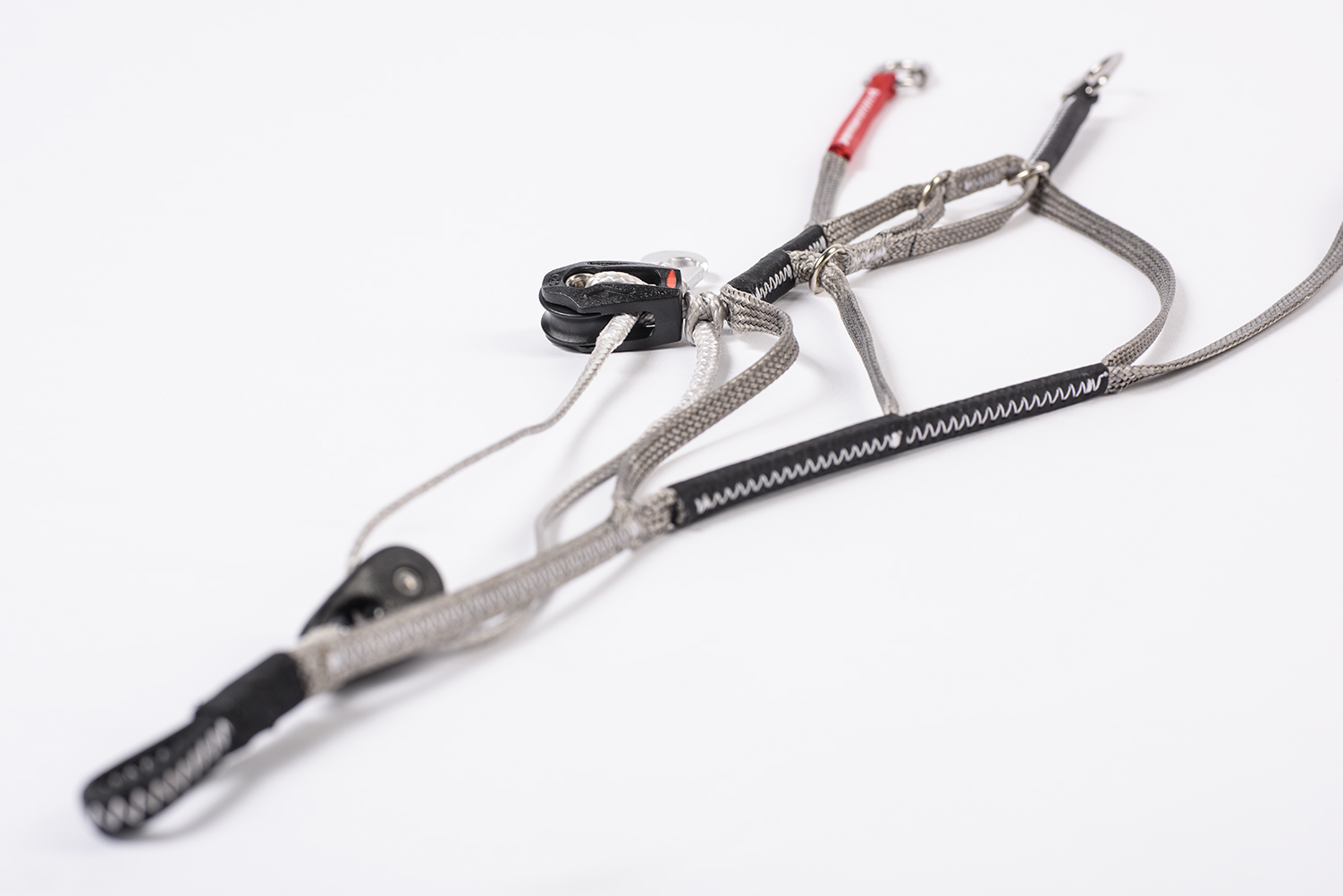Ultra versatile. Ultralight.
The ARAK is the most versatile glider in our model range and has made a name for itself as a real multi-tool. The ARAK is easy to handle and immediately inspires confidence. Its performance enables flights beyond the 300 km mark and its handling invites playful flying of any kind.
The special edition of our multitool brings all these features to an ultra-lightweight level. The ARAK AIR combines the concept of the ARAK with the technology of our X-ALPS wings! At only 2.9 kg, the ARAK AIR’s weight is not only reduced by 30%, its packing size is also considerably smaller, so the ultralight glider fits into even the smallest backpack. This exclusive combination makes the ARAK AIR the perfect glider for all pilots who like to fly X-Alps style and who want to rely on the passive safety of an intermediate glider.
The best adventure is your own adventure!
X-Alps-style flying with simple handling.
HOW DOES THE ARAK AIR FLY?
Construction
Our ambition was to design an easy-to-fly glider with high performance potential that is ultra-lightweight and very small to pack at the same time. The basic concept of the ARAK AIR is the same as the ARAK and it is manufactured with the same lightweight technology of our X-Alps gliders. The innovative TX-Light fabric, used on the heavily stressed leading edge, offers an excellent compromise between lightness and robustness. On the rest of the canopy the very light 10D material is used. The 10D has a very good aging resistance despite its extremely low weight.
Flying Behavior
The lightweight materials greatly simplify launch behavior. In the air, the ARAK AIR offers a lot of comfort due to its smoothness, making it very easy to handle. The canopy gives excellent feedback and builds confidence right from the start, so you can focus on the essentials even in the most demanding conditions. The compact ultra-lightweight intermediate allows the control of any bank angle with ease, so you will always find the best position in weak thermals as well as in rough lift. Team pilots Oliver Teubert and Kilian Hallweger, who took 1st and 2nd place in the German cross-country championship (DHV-XC) in the standard class with the ARAK 2019, showed that the ARAK series has enormous performance potential. The ARAK AIR lets you easily exploit the potential thanks to its simplicity.
If you want to fly adventures like the X-Alps athletes, but are looking for a glider that is a little easier to handle in everyday life, then the ARAK AIR is your first choice!

JET FLAPS
Our JET FLAPS extend the green arc as you approach the stall point, which substantially increases safety and also improves climb performance.

MINI RIBS
Doubling the number of cells at the trailing edge increases its shape stability substantially. Advantage: fewer vortices improve the aerodynamics and with it the performance.

RIGID FOIL
The Rigid Foil nylon wires on the leading edge help maintain its shape and ensure constant ram air pressure. Advantages: better takeoff behavior, more performance and lower canopy weight.

SHARK NOSE
Together with a corresponding wing design, the shark nose technology improves pressure distribution in the canopy substantially. Advantages: much more solid flying feeling and substantial performance gain, especially when gliding on bar.

3D-SHAPING
A precise calculation of the leading edge geometry and the installation of an additional strip of fabric reduce wrinkling in this sensitive part of the glider. Advantages: exact wing shape, more performance.

AUTOMATIC SAND RELEASE SYSTEM
Porous openings of the profile ribs at the trailing edge ensure that sand and dirt in the glider are automatically guided to the wingtip where they can trickle out. This helps preserve the material and “relieves” the trailing edge.
| Size | XXS | XS | S | M | L |
| Cells | 57 | 57 | 57 | 57 | 57 |
| Area flat (m²) | 21.4 | 23.3 | 24.8 | 26.4 | 28.6 |
| Area projected (m²) | 18.3 | 20.0 | 21.3 | 22.6 | 24.5 |
| Wingspan flat (m) | 10.75 | 11.22 | 11.58 | 11.94 | 12.42 |
| Wingspan projected (m) | 8.60 | 8.98 | 9.26 | 9.55 | 9.93 |
| Aspect ratio flat | 5.40 | 5.40 | 5.40 | 5.40 | 5.40 |
| Aspect ratio projected | 4.03 | 4.03 | 4.03 | 4.03 | 4.03 |
| min. profile depth (cm) | 58 | 61 | 63 | 65 | 67 |
| max. profile depth (cm) | 242 | 253 | 261 | 269 | 280 |
| Glider weight* (kg) with Dyneema-Riser. Weight with Regular-Riser apprx. +200g | 2.9 | 3.1 | 3.3 | 3.5 | 3.7 |
| Recommended weight range (kg) | 55-75 | 70-85 | 80-95 | 90-105 | 100-120 |
| Certified weight range (kg) | 50-80 | 65-90 | 75-100 | 85-110 | 95-120 |
| Homologation | LTF/EN B | LTF/EN B | LTF/EN B | LTF/EN B | LTF/EN B |
| Upper Sail | Dominico TX-Light / 10D |
| Lower Sail | Dominico 10D |
| Ribs | Porcher Skytex 27g hard |
| Bands | Porcher Skytex 27g hard |
| Main lines | Liros PPSLS 180/125 |
| Middle lines | Liros PPSLS 125 |
| Top lines | Liros DC 60 |
| Brake lines | Liros DFLP 200/32, Liros PPSLS 125/65, Liros DC60 |
| Riser Regular | Güth&Wolf 12mm Webbing |
| Riser Dyneema | Liros 6mm Dyneema |
Is the deterioration on light-cloths higher than on a regular glider cloth?
Light-cloths are thinner than conventional glider-cloths and therefore less resistant against mechanical strain. That means you need to pay more attention on small rocks and bushes. Please avoid any unnecessary contact to the ground. With this strict observance you will have the same durability as with a conventional glider-cloth.
What are the glide ratio (L/D), trim and maximum speeds?
We know that these data are interesting for you as a pilot, but for us to publish them would be a bad idea for the following reasons:
1) Performance data are highly dependent on the drag of the pilot and are thefore related to sitting position and harness. The difference between aerodynamically favorable and unfavorable harnesses and sitting positions can be as much as a whole L/D number.
2) Performance increases with the size of the glider. A large glider will always outperform the same glider in a smaller size. So a question about the performance of a glider is always also a question about the size.
3) There is no normed method of testing the performance of paragliders. For example, speed varies with altitude and the associated different air pressure, but also with the total weight of the system.
That means that there simply isn’t THE speed or THE L/D that would allow a serious comparison with another glider. Performance data are dependent on the harness, the size of the glider, on the air mass and the total weight.
How do I calculate my takeoff weight?
Takeoff weight is calculated by adding the weight of the pilot including clothes to the weight of the equipment. The equipment consists of the harness, the reserve chute, the paraglider itself, and any flight instruments and other baggage you may carry (e.g. rucksack, etc.).
Is it OK for me to shorten the brake lines on my skywalk paraglider?
Changing the length of the brake lines can have a negative effect on the flying characteristics and extreme flight behavior. The paraglider needs a little more lead when flying on speed bar, otherwise the glider could be braked unintentionally, leading to a loss of performance. When performing extreme flying maneuvers, shortening the brake lines too much can cause complications during recovery from collapses, parachutal stall, etc.
Am I allowed to make modifciations to my skywalk paraglider?
No, because the glider is certified the way it is delivered to you. Even the brake line length is part of the trim and must not be changed.
Why shall I not navigate my glider through the C-level?
As opposed to gliders with two line levels with which you can change the angle of attack by pulling the rear risers, doing the same on a glider with three line levels causes the profile to deform. This results in a crease forming between levels, which makes the glider more susceptible to collapses. In an emergency, control deflections of several centimeters are possible.
Do the nylon wires in the glider need any special attention or packing method?
Our nylon wires are flexible and kink resistant, so they won’t break under normal circumstances. But due to the packing volume it is a good idea to lay the Rigid Foils in the leading on top of each other on both sides.
What are JetFlaps and how do they work?
Jet Flaps are a so-called split flap like those seen on a large airplane. When the glider is braked, the airflow is routed through the glider, restoring smooth airflow. This extends brake line travel and softens the stall behavior.
What advantage do the JetFlaps on my skywalk paraglider offer?
Lower flyable minimum airspeed. The speed range is wider and easier to control. The pilot has more time to react when flying near the stall point.
Your ARAK AIR package
-
- 1x Compression strap
- 1x Innerbag for glider
- 1x Riser bag
- 1x BASIC GUIDE
- 1x Sticker Set
- 1x Bandana
- 1x Self-adhesive repair patch



